TV Shows
Laugh Out Loud: TV Shows With The Funniest Ensemble Casts
The funniest comedies don’t rely on one star—they thrive on the chemistry, clashes, and quirks of a full cast. From classic friends in New York to chaotic workplaces and small-town crews, these ensemble comedies deliver laughs, heart, and unforgettable group dynamics every episode.
The funniest comedies don’t rely on one star—they thrive on the chemistry, clashes, and quirks of a full cast. From classic friends in New York to chaotic workplaces and small-town crews, these ensemble comedies deliver laughs, heart, and unforgettable group dynamics every episode.
What Makes a Great Ensemble Comedy Cast?
A standout ensemble comedy is never just the sum of funny parts. Several elements must work in harmony:
Balance and diversity of characters: There should be variation—someone earnest, someone cynical, someone odd, someone grounded—without any one role dominating all the time.
Chemistry and responsiveness: Cast members must play off each other, reacting in ways that feel spontaneous and attuned. Improvisational energy often helps.
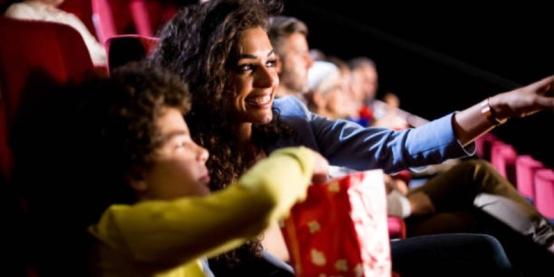
Comedic timing and rhythm: Ensemble work demands knowing when to pause, when to punctuate, when to yield the spotlight. If everyone hogs airtime, scenes feel chaotic.
Brilliant writing and role integration: Scripts must distribute arcs and jokes meaningfully. It's not enough to give each character lines; the humor needs to come from how they intersect.
Consider Friends, where each of the six had nearly equal share in jokes and emotional beats. The result is a deeply relational structure rather than a vehicle for one or two stars. The Office (US) succeeds because it builds a workplace world where even minor characters (Kevin, Creed, Angela) get moments that resonate.
Audiences attach to ensemble groups because they mirror real friendships and communities: highs, lows, rivalry, support. When one character succeeds or fails, it feels shared, which amplifies both laughs and emotional payoff.
Top TV Shows With the Funniest Ensemble Casts
Each of these shows is worth watching not just for individual stars but for how the group functions as a comedic unit.
The Office (US)
Synopsis: A mockumentary-style look at daily life in Dunder Mifflin’s Scranton branch.
Why the ensemble works: The cast includes an awkward boss (Michael Scott, Steve Carell), a bookish everyman (Jim), a straight-laced salesman (Dwight, Rainn Wilson), and many eccentric coworkers. Their contrasting temperaments—naïveté, ambition, obliviousness—collide to produce cringe comedy, heartbreak, and bonding.
Humor style: Cringe, situational, character-driven deadpan.
Notable cast members: Steve Carell, Rainn Wilson, John Krasinski, Jenna Fischer, Mindy Kaling, and many more.
Where to watch: Peacock (U.S.), regionally Netflix in some countries.
Parks and Recreation
Synopsis: The inner workings of a small town parks department in fictional Pawnee, Indiana.
Why the ensemble works: The optimism of Leslie Knope (Amy Poehler) contrasts perfectly with the dry sarcasm of Ron Swanson (Nick Offerman), the teenage sincerity of Andy Dwyer (Chris Pratt), and the weirdness of April (Aubrey Plaza). The cast supports Leslie’s mission while bringing their own chaos.
Humor style: Workplace satire, whimsical, character-driven.
Notable cast members: Amy Poehler, Nick Offerman, Aubrey Plaza, Aziz Ansari, Chris Pratt.
Where to watch: Peacock, Hulu.
Friends
Synopsis: Six friends navigate life, love, career, and friendship in New York City over ten seasons.
Why the ensemble works: Even though each character has distinct traits (e.g. Monica’s control, Chandler’s sarcasm, Phoebe’s quirkiness), the show rarely sidelines someone. The cast’s rapport and timing make it feel like real friendship.
Humor style: Situational, relationship-driven humor.
Notable cast members: Jennifer Aniston, Courteney Cox, Matthew Perry, Matt LeBlanc, David Schwimmer, Lisa Kudrow.
Where to watch: Max (HBO).
Brooklyn Nine-Nine
Synopsis: A comedic police procedural centered on the detectives of Brooklyn’s 99th precinct.
Why the ensemble works: The cast is lively and varied: the immature yet brilliant Jake (Andy Samberg), the stern Captain Holt (Andre Braugher), the no-nonsense Rosa, the soft-hearted Amy, and the amusingly literal Terry Crews. The intercutting of precinct life with individual quirks makes the group shine.
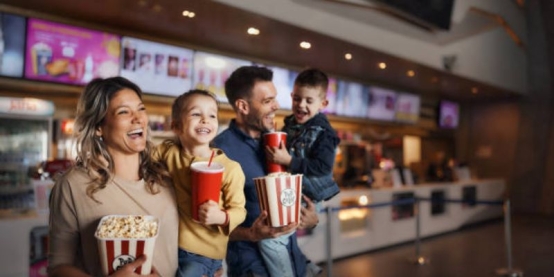
Humor style: Workplace + absurd + buddy comedy.
Notable cast members: Andy Samberg, Terry Crews, Andre Braugher, Stephanie Beatriz.
Where to watch: Peacock, Hulu.
Arrested Development
Synopsis: The wealthy but dysfunctional Bluth family copes after their patriarch’s arrest, wreaking havoc in the process.
Why the ensemble works: No character is “normal.” Michael (Jason Bateman) tries to hold the family together while siblings, cousins, and in-laws create cascading disasters. The writing is full of callbacks and inside jokes that reward ensemble memory.
Humor style: Absurd, ironic, dense with layers and callbacks.
Notable cast members: Jason Bateman, Will Arnett, Portia de Rossi, Michael Cera, Jessica Walter.
Where to watch: Netflix.
Schitt’s Creek
Synopsis: A formerly wealthy family is forced to live in a small town they once bought for laughs. Over time, they grow into the community.
Why the ensemble works: The Levys and O’Hara bring great comedic contrast: Moira and Johnny are pretentious, David is deadpan, Alexis is self-involved, and the townsfolk support the core family. Their evolving relationships catch emotional and comedic arcs.
Humor style: Quirky, character-driven humor with heartfelt moments.
Notable cast members: Eugene Levy, Catherine O’Hara, Dan Levy, Annie Murphy.
Where to watch: Hulu.
Community
Synopsis: A ragtag group of community college students form a study group that becomes a surrogate family.
Why the ensemble works: Every member is vivid: Jeff is smooth but insecure, Britta is earnest but clueless, Abed is meta-obsessed, Annie is ambitious, Troy is goofy, Shirley is maternal but flawed. The show leans into parody and genre shifts, always anchored in character relationships.
Humor style: Meta, absurd, self-aware.
Notable cast members: Joel McHale, Donald Glover, Alison Brie, Ken Jeong, Chevy Chase.
Where to watch: Netflix (regionally), Peacock.
It’s Always Sunny in Philadelphia
Synopsis: A group of morally dubious friends run a dysfunctional bar in Philadelphia and pursue schemes with reckless abandon.
Why the ensemble works: There is no “good” character—all are self-serving, petty, and often despicable. That equality of dysfunction lets the worst impulses of each interact with comedic logic.
Humor style: Dark, absurd, unpredictable.
Notable cast members: Charlie Day, Rob McElhenney, Glenn Howerton, Kaitlin Olson, Danny DeVito.
Where to watch: Hulu (varies by region).
Modern Family
Synopsis: A mockumentary-style portrayal of three related households, capturing modern family life’s challenges and humor.
Why the ensemble works: The show balances generational differences, cultural contrasts, and relationship dynamics. Each family unit has chemistry and voice: Jay and Gloria, Mitchell and Cam, and Claire and Phil.
Humor style: Situational, family satire, heartfelt.
Notable cast members: Ed O’Neill, Sofia Vergara, Ty Burrell, Julie Bowen, Jesse Tyler Ferguson, Eric Stonestreet.
Where to watch: Hulu, Disney+.
Ted Lasso
Synopsis: An American football coach is hired to manage a British soccer team, despite knowing little about the sport.
Why the ensemble works: Though Ted (Jason Sudeikis) is the emotional core, the supporting cast—Rebecca, Roy, Keeley, Jamie, Nate—are fully realized. The humor emerges from clashes of culture, optimism, personal flaws, and team dynamics.
Humor style: Warm, witty, workplace + feel-good.
Notable cast members: Jason Sudeikis, Hannah Waddingham, Brett Goldstein, Brendan Hunt.
Where to watch: Apple TV+.
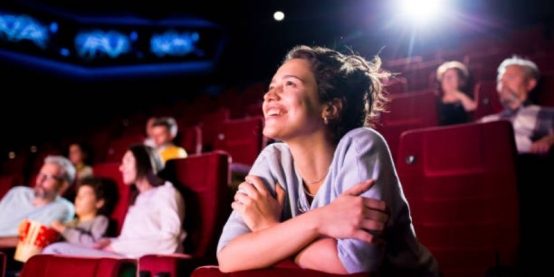
Hidden Gems: Underrated Ensemble Comedies Worth Watching
These shows may not be as universally known, but they are treasures for ensemble fans.
Superstore – A down-to-earth look at big-box retail, mixing social commentary with quirky coworkers.
The Good Place – Philosophical humor meets character chemistry, especially among the ensemble navigating ethics and afterlife.
Happy Endings – Fast-paced group banter, situational absurdity, and strong friendship bonds.
30 Rock – Meta-comedy about producing a sketch show; its cast (Alec Baldwin, Tina Fey, Tracy Morgan) shares sharp, layered humor.
New Girl – A quirky group of roommates offers both romantic comedy and oddball character moments.
Each of these undervalued ensembles exemplifies how group dynamics can elevate jokes and emotional stakes.
How Ensemble Comedies Have Evolved Over Time
Ensemble comedies move with the cultural and aesthetic tides. Below is a rough sketch of their evolution:
1990s – Multi-camera, laugh-track era
Classic sitcoms such as Friends and Seinfeld relied on stage-style setups, live audience cues, and a consistent rubric of jokes per minute.
2000s – Mockumentary, single-camera, workplace settings
Shows like The Office, Parks and Recreation, and 30 Rock broke away from laugh tracks to more naturalistic camera styles. Humour shifted toward awkwardness, realism, meta commentary, and ensemble interactions.
2010s–2020s – Emotional nuance, diversity, risk-taking
Ensembles like Master of None, Atlanta, Ted Lasso, and Superstore emphasize personal growth, representational diversity, and blending of humor with earnest narrative arcs. The modern ensemble often hinges on empathy as much as punchlines.
This shift underscores how audiences crave laughter that carries weight, not just spectacle.
The Psychology of Why Audiences Love Ensemble Casts
Understanding why ensemble comedies resonate so strongly requires a peek into viewer psychology:
Sense of inclusion: Watching a group relate reminds viewers of their own friend groups, making the show feel like a gathering of people they understand and love.
Emotional diversity: Different characters allow different audience members to connect—one might empathize with the anxious type, another with the carefree one.
Shared payoff: In ensemble stories, victories, failures, and laughs feel communal. When one character succeeds, it feels like a group win.
Tension and harmony: Conflict between personalities fuels comedy, while moments of unity offer relief and warmth—a satisfying emotional arc.
This interplay between chaos and comfort is core to why ensemble comedies stay in audiences’ hearts.
Choosing Which Ensemble Comedy to Watch First
With so many excellent options, here’s a simple path:
From the classic era, start with Friends or 30 Rock (hidden gem).
For mockumentary-style laughs, try The Office (US) or Parks and Recreation.
For workplace + absurd + heart, go for Brooklyn Nine-Nine or Ted Lasso.
To explore flawed characters, Arrested Development and It’s Always Sunny in Philadelphia push boundaries.
For emotional growth and ensemble arcs, Schitt’s Creek or The Good Place deliver depth alongside laughs.
Dab into each style to see which ensemble energy fits best.
Wrapping Up
Ensemble comedies become timeless not because of punchlines, but because the cast feels like a unified, Breathing group. Viewers don't just wait for a joke; they wait for interactions, relationships, and transformation across episodes. By presenting a variety of shows—classic and modern, high-concept and grounded—this guide offers viewers a complete panorama of how the funniest ensemble casts balance humor, heart, and collective voices across eras.
Sources
Outfit Ideas
Creative Couple Halloween Costume Ideas For Every Style
August 28, 2025
Outfit Ideas
You're Wearing Jeans Wrong. Here's The Right Way To Style Them.
August 20, 2025
TV Shows
TV Shows With The Most Memorable One-Liners
September 9, 2025
Celebrity
The World's 18 Richest Rappers: Who Has The Highest Net Worth?
August 21, 2025
Celebrity
How Much Did Taylor Swift Pay For Her Masters: The Full Story
August 22, 2025
Movies
The TRUTH About 4K Streaming: Which Actually Delivers Ultra HD Movies
August 14, 2025
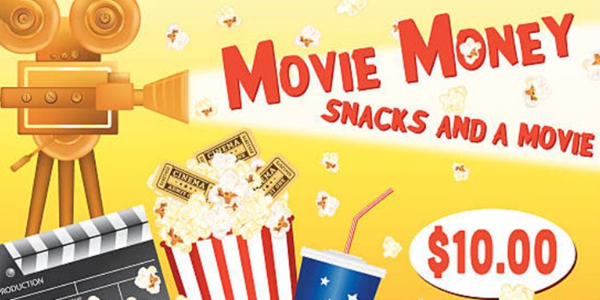
Movies
The Perfect Gift For Cinephiles: Where To Buy The Best Movie Gift Cards
August 12, 2025
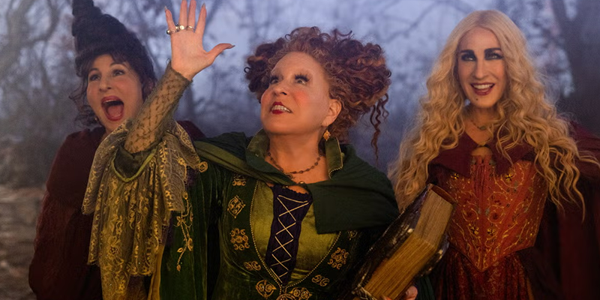
Movies
12 Classic Halloween Movies That Never Get Old
September 6, 2025

TV Shows
Binge-Worthy TV Shows Perfect For Family Movie Nights
August 30, 2025

Movies
WATCH FREE Movies: The Streaming Services Still Offering Long Free Trials
August 10, 2025

Movies
Stop Wasting Your Money: Film Streaming Services Ranked 2025
August 23, 2025

TV Shows
13 Best Feel-Good TV Shows For Stressful Days
September 7, 2025